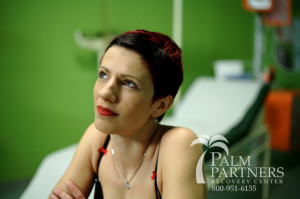Opiate-addicted patients, such as heroin addicts and people addicted to narcotic painkillers know the pain that comes with detoxing. Being in recovery from opiates, I know the fantasy of being knocked out during the detox so that the withdrawal symptoms wouldn’t be felt – waking up refreshed with no memory of the hell that is the opiate detox.
So, when I heard about ultra rapid opiate detox, I thought, “Man, I wish I had had that option when I went to treatment.” However, this procedure is not all that it’s cracked up to be.
What is Ultra Rapid Opiate Detox?
Ultra-Rapid Opiate Detoxification (UROD) is a technique that gained some popularity in the 1980s that was used to help people detox from opiates, with the idea of lessening the withdrawal syndrome. Until this time, methods to detox heroin addicts and others hooked on opiates were somewhat archaic and quite uncomfortable.
Those who undergo this so-called ultra-rapid opiate detox are given anesthesia with the idea that they will basically be unconscious while the opiates are flushed from their system. However, those who have undergoneUROD/ URD suffer withdrawal symptoms that are just as severe as those endured by patients who are detoxed by more traditional methods, according to a NIDA-funded clinical trial.
Researchers Dr. Eric Collins and colleagues at the College of Physicians and Surgeons of Columbia University concluded that there is no reason good enough to support the use of general anesthesia in the detox from opiate dependence, and this is especially because of the safety concerns and risks that it subjects the patient to. Their findings also support those of three previous studies that were conducted internationally.
URD involves putting patients under general anesthesia and giving them Naltrexone to flush all of the opiates out of their system. Although successful, it actually causes a major shock to the patient’s system. Patients who have undergone URD report feeling absolutely terrible. And there are serious risks associated with ultra rapid opiate detox: approximately 1 in 500 to 1 in 1,000 patients will die after the procedure and the exact cause of death is unknown.
Why We Don’t Do Ultra Rapid Opiate Detox (and Why You Shouldn’t Either)
The risks to patients that are involved with URD along with discomfort and high cost, make URD an undesirable option for treatment of opiate detox withdrawal syndrome. Instead, we use an accelerated detox method and find that this technique is better in many ways than the use of URD.
The accelerated detoxification process still incorporates the use of certain medications in order to stabilize our clients while tapering off of opiates. This allows the body to adjust much more comfortably while reducing the amount of risk from withdrawal and of those associated with other methods, such as URD. Palm Healthcare offers detox without the use of general anesthesia, which is dangerous and brings unnecessary side effects and risks to our clients.
So, why we don’t do ultra rapid opiate detox (and why you shouldn’t either)…
There is no advantage to the ultra rapid opiate detox approach and, on top of that, there are increased – and unnecessary – risks that accompany URD.
“Although providers advertise anesthesia-assisted detox as a fast and painless method to kick opiate addiction, the evidence does not support those statements,” says Dr. Collins. “Patients should consider the many risks associated with this approach, including fluid accumulation in the lungs, metabolic complications of diabetes, and a worsening of underlying bipolar illness, as well as other potentially serious adverse events” he says.
Clients with co-occurring medical conditions known as dual diagnosis, which is quite common among substance abusers, including psychological disorders, high blood sugar, diabetes, hepatitis, heart disease, and AIDS – are particularly at risk when given anesthesia. “Careful screening is essential with the anesthesia-assisted method, because the thought of sleeping through withdrawal is so compelling that some patients may conceal their medical histories,” says Dr. Collins.
If you or someone you love is struggling with substance abuse or addiction, please call toll-free 1-800-951-6135.
